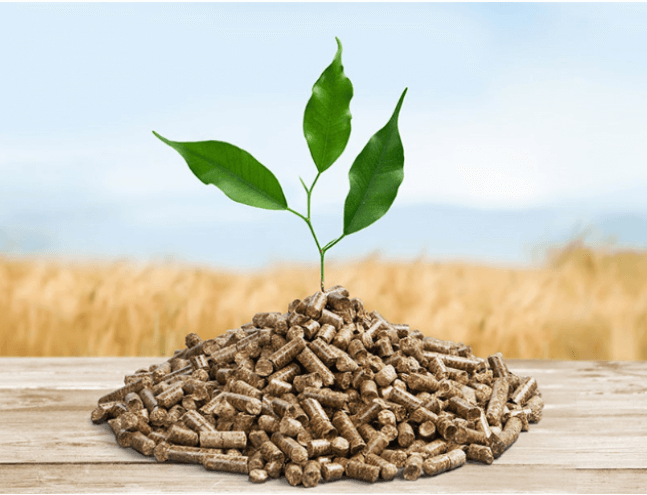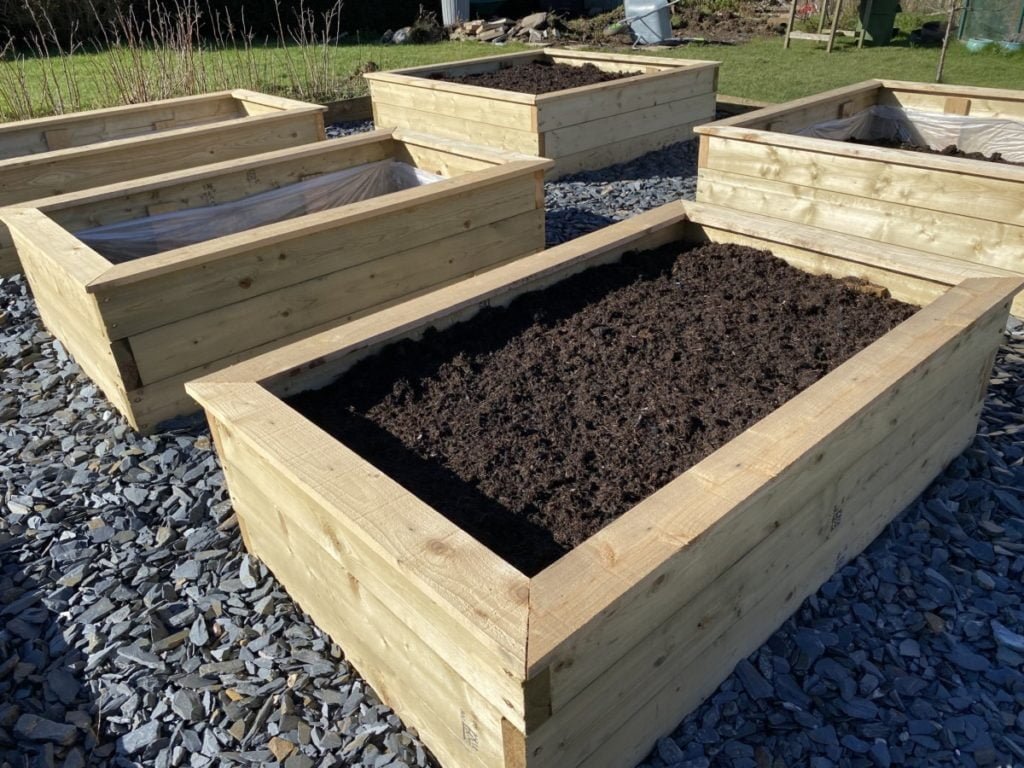Wood Pellets for Soil Health offer a natural solution, enhancing soil structure, improving water retention, and providing essential nutrients as they decompose, thereby fostering healthier and more productive soil.
The Secret to Lush Gardens: Uncovering the Power of Wood Pellets for Soil Enrichment
Soil is the foundation of any garden, and its health directly impacts the growth and vitality of plants. Enriching the soil is essential for creating lush and thriving gardens. Soil enrichment involves improving the structure, nutrient content, water retention, and overall health of the soil. One effective method of soil enrichment is through the use of wood pellets.
Wood pellets are a natural and sustainable source of organic matter that can greatly benefit garden soil. They are made from compressed sawdust and other wood waste materials, making them an eco-friendly option for soil enrichment. Wood pellets provide numerous benefits to the soil, including improved structure, increased nutrient availability, enhanced water retention, and reduced soil erosion.
What are Wood Pellets and How Do They Work?
Wood pellets are small cylindrical pellets made from compressed sawdust and other wood waste materials. They are typically used as a fuel source for heating purposes, but they can also be used for soil enrichment in gardens. Wood pellets are made by compressing the raw materials under high pressure, which causes the lignin in the wood to bind the particles together.
When wood pellets are applied to garden soil, they slowly break down over time, releasing organic matter and nutrients into the soil. This process is known as decomposition. As the wood pellets decompose, they improve the structure of the soil by increasing its organic matter content. This leads to better drainage and aeration, which are crucial for healthy plant growth.
The Benefits of Using Wood Pellets for Soil Enrichment
1. Improved Soil Structure: One of the key benefits of using wood pellets for soil enrichment is improved soil structure. The organic matter in wood pellets helps to bind soil particles together, creating larger aggregates that allow for better water infiltration and root penetration. This results in healthier root systems and improved nutrient uptake by plants.
2. Increased Nutrient Availability: Wood pellets are rich in organic matter, which is a source of essential nutrients for plants. As the wood pellets decompose, they release these nutrients into the soil, making them available for plant uptake. This can help to improve the overall nutrient content of the soil and promote healthy plant growth.
3. Enhanced Water Retention: Wood pellets have the ability to absorb and retain water, which can be beneficial for gardens, especially in dry or arid climates. When wood pellets are incorporated into the soil, they act like sponges, absorbing water and slowly releasing it back into the soil as needed. This helps to prevent water runoff and allows plants to access water more efficiently.
4. Reduced Soil Erosion: Soil erosion is a common problem in gardens, especially in areas with sloping terrain or heavy rainfall. Wood pellets can help to reduce soil erosion by improving the structure of the soil and increasing its ability to hold onto water. The organic matter in wood pellets also helps to bind soil particles together, preventing them from being washed away by rain or irrigation.
How to Use Wood Pellets in Your Garden
1. Preparing the Soil: Before applying wood pellets to your garden, it’s important to prepare the soil properly. Start by removing any weeds or debris from the area where you plan to apply the pellets. Loosen the soil with a garden fork or tiller to improve its structure and allow for better penetration of the wood pellets.
2. Applying Wood Pellets: Once the soil is prepared, spread a layer of wood pellets evenly over the surface of the soil. The recommended application rate is typically 1-2 pounds of wood pellets per square foot of garden space. However, it’s important to follow the specific instructions provided by the manufacturer of the wood pellets you are using.
3. Incorporating Wood Pellets into the Soil: After applying the wood pellets, use a garden rake or hoe to incorporate them into the top few inches of soil. This will help to ensure that the pellets are evenly distributed and will facilitate their decomposition and nutrient release. Avoid burying the pellets too deeply, as this can hinder their decomposition process.
The Best Types of Wood Pellets for Soil Enrichment
1. Softwood vs. Hardwood Pellets: When choosing wood pellets for soil enrichment, you have the option of using either softwood or hardwood pellets. Softwood pellets are typically made from coniferous trees, such as pine or spruce, while hardwood pellets are made from deciduous trees, such as oak or maple. Both types of pellets can be effective for soil enrichment, but they have slightly different characteristics.
Softwood pellets tend to break down more quickly than hardwood pellets, which means they release nutrients into the soil at a faster rate. This can be beneficial if you need to quickly improve the nutrient content of your soil. Hardwood pellets, on the other hand, break down more slowly and provide a longer-lasting source of organic matter and nutrients.
2. Pellet Size and Shape: Wood pellets come in various sizes and shapes, including standard cylindrical pellets and mini-pellets. The size and shape of the pellets can affect their decomposition rate and how quickly they release nutrients into the soil. Standard-sized pellets are generally recommended for most garden applications, as they provide a good balance between decomposition rate and nutrient release.
3. Choosing the Right Brand: When selecting wood pellets for soil enrichment, it’s important to choose a reputable brand that uses high-quality raw materials and manufacturing processes. Look for brands that have been certified by third-party organizations, such as the Forest Stewardship Council (FSC), which ensures that the wood used to make the pellets comes from sustainable sources.
How Often Should You Use Wood Pellets in Your Garden?
The frequency of wood pellet application in your garden will depend on several factors, including the current condition of your soil, the specific needs of your plants, and the type of wood pellets you are using. In general, it is recommended to apply wood pellets to your garden once or twice a year.
Factors that affect pellet application frequency include the nutrient content of your soil, the type of plants you are growing, and the overall health of your garden. If your soil is already nutrient-rich and your plants are thriving, you may not need to apply wood pellets as frequently. However, if your soil is depleted or your plants are showing signs of nutrient deficiency, more frequent applications may be necessary.
Recommended application rates vary depending on the specific brand and type of wood pellets you are using. It’s important to follow the instructions provided by the manufacturer to ensure that you are applying the correct amount of pellets for your garden.
Monitoring the health of your soil is also important in determining how often to use wood pellets. Regularly testing your soil for nutrient levels and pH can help you determine if additional applications of wood pellets are needed. Soil testing kits are readily available at garden centers or through online suppliers.
The Environmental Benefits of Using Wood Pellets in Your Garden
Using wood pellets for soil enrichment offers several environmental benefits. Here are some of the key advantages:
1. Sustainable Sourcing: Wood pellets are made from waste materials generated by the forestry and woodworking industries. By using these waste materials to produce wood pellets, we can reduce our reliance on fossil fuels and promote sustainable practices in these industries.
2. Reduced Waste and Carbon Emissions: By diverting waste materials from landfills and using them to produce wood pellets, we can reduce waste and lower carbon emissions. When organic waste decomposes in landfills, it produces methane, a potent greenhouse gas. By converting this waste into wood pellets, we can prevent methane emissions and reduce our carbon footprint.
3. Positive Impact on the Environment: Using wood pellets for soil enrichment can have a positive impact on the environment by improving soil health and promoting sustainable gardening practices. Healthy soil helps to sequester carbon dioxide from the atmosphere, mitigating climate change. It also supports biodiversity by providing a habitat for beneficial microorganisms and insects.
Tips for Choosing the Right Wood Pellets for Your Garden
When choosing wood pellets for soil enrichment, it’s important to do your research and select a brand that meets your specific needs. Here are some tips to help you make the right choice:
1. Researching Brands and Suppliers: Take the time to research different brands and suppliers of wood pellets. Look for companies that have a good reputation and positive customer reviews. Consider factors such as the quality of their products, their commitment to sustainability, and their customer service.
2. Reading Product Labels: Read the product labels carefully to understand the composition and characteristics of the wood pellets. Look for information on the type of wood used, the manufacturing process, and any certifications or quality standards that the pellets meet.
3. Seeking Recommendations from Experts: If you’re unsure about which brand or type of wood pellets to choose, seek recommendations from gardening experts or professionals in your area. They can provide valuable insights based on their experience and knowledge.
Common Mistakes to Avoid When Using Wood Pellets for Soil Enrichment
While using wood pellets for soil enrichment can be highly beneficial, there are some common mistakes that gardeners should avoid:
1. Over-application: Applying too many wood pellets can lead to an imbalance in nutrient levels and potentially harm your plants. Follow the recommended application rates provided by the manufacturer and monitor your soil regularly to ensure that you are not over-applying.
2. Failure to Incorporate Pellets into the Soil: Simply spreading wood pellets on top of the soil without incorporating them can result in uneven decomposition and nutrient release. Use a garden rake or hoe to mix the pellets into the top few inches of soil, ensuring that they are evenly distributed.
3. Using Low-Quality Pellets: Not all wood pellets are created equal. Using low-quality pellets that are made from inferior raw materials or have not been properly processed can result in poor soil enrichment and limited benefits. Choose reputable brands that use high-quality raw materials and have a track record of producing reliable products.
The Power of Wood Pellets for Lush Gardens
In conclusion, wood pellets are a valuable tool for enriching garden soil and promoting lush and thriving gardens. They provide numerous benefits, including improved soil structure, increased nutrient availability, enhanced water retention, and reduced soil erosion. By using wood pellets in your garden, you can create a healthy and sustainable environment for your plants to thrive.
When using wood pellets for soil enrichment, it’s important to choose the right type and brand, follow the recommended application rates, and monitor the health of your soil. Avoid common mistakes such as over-application and failure to incorporate the pellets into the soil. By following these guidelines and seeking advice from experts, you can maximize the benefits of wood pellet soil enrichment in your garden.
So why not give wood pellets a try in your garden? Experience the power of this natural and sustainable soil enrichment method and enjoy the lush and vibrant results. Your plants will thank you, and you’ll be rewarded with a beautiful and thriving garden.
Originally posted 2024-02-01 12:39:12.





Do you supply wood pellet for animal bedding, especially cows? I would love to explore and buy.
@Milan: Hello, yes we do have different types of animal bedding wood pellets for cattle and horses. Please drop us a line at admin@farmvina.com so that we can assist you better.